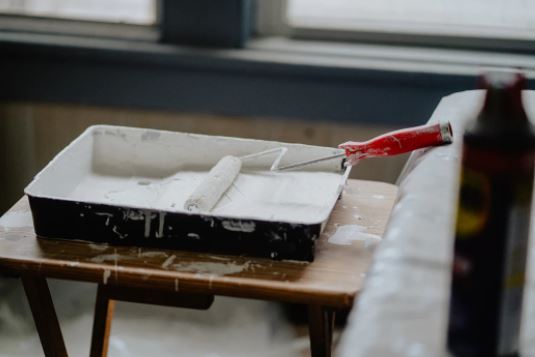
Floods and water in general can cause a lot of damage to your home, so you need to act fast and be efficient when it comes to repairs. But a lot of people have no clue where and how to start when it comes to repairing their homes and bringing them to the original state/ Water is tricky, it can do lots of damage fast, but also it can gradually make things worse, not only aesthetically, but in general – mould is certainly not good for you! You need to fix the problem as soon as possible, so here are 7 essential ways to renovate your home after water damage!
-
Get rid of the water
Probably the first thing you need to do as soon as you notice the water is to get rid of it as much as you can. Depending on the severity of the situation, if it was a full-blown flood or just a leakage, you want to make sure that the water didn’t come across electricity – so make sure that you shut it down beforehand just to be safe. Then, it’s time to clean up and get rid of the water. This will help out a lot right away, instead of waiting for a long time to seep into the walls and floor even more than it already did. Water spreads fast and it can seep into different kinds of materials, so pay attention to areas that have porous materials and quickly gather as much water before jumping further into the process.
-
Dry the area
Before you jump into renovating, you need to dry the space fully in order to properly do the renovations that are yet to come. If the water damage wasn’t significant, you could get away with letting space dry on its own – just open a window, but in most cases where the water damage was prominent, you’ll need a bit of help! By using heavy-duty fans, you’ll be able to dry the area sooner and way better than letting it dry naturally! Drying out the space is key, as it can totally make or break your renovation plans!
-
Dysenfect
A big part of getting your home to its original shape is cleaning the obvious mess that water damage has made. The damage can be wary, it also depends on what type of water caused the damage in the first place! But regardless of that, you’ll need to clean and disinfect the area, with lots of different products, this might seem insignificant and a waste of money but it’s absolutely crucial! You can find lots of chevy duty cleaning products in your local department stores, and even use Kohl’s vouchers to lower expenses. But always make sure to inspect the damage and levels of hazard, in some cases, you’ll need to call the professional if the water is extremely dirty and contaminated!
-
Inspect mould
Water damage can oftentimes cause more damage than you think, and it goes far beyond the aesthetic side of things, water damage can actually be pretty harmful to you. One of the biggest problems you can face is mould – so checking the severity of mould levels in your home is necessary and it will determine your further plans for renovation. Even if the mould damage doesn’t seem too alarming or big, it can spread around and cause more problems, not to mention that it looks bad! This will also prevent any kind of harm to your health, as breathing in mould can cause a lot of health problems, getting rid of it on time is the best thing you can do!
-
Replace porous area and wood
Homes are made from lots of different materials, not just brick and cement, so some parts of your home might be affected by water damage more than others. That’s why you should probably get rid of areas that can simply never be dry and back to the original state, like wallpapers or kinds of fabrics like carpets, those are simply better off than kept down. After you’ve done all the drying, cleaning, and patching up. You can always replace those materials with new ones for a fresh start! Wood can also get pretty damaged when soaked with water, especially if mould is involved, the wood might start rotting. So make sure to replace it if the damage is more than you can handle and repair!

-
Repair drywall
Let’s be real, water damage leaves a nasty, and oftentimes large mark on your walls and ceiling that cannot be concealed easily! Simply drying the walls might work sometimes, but in most cases, you’ll need to put in a bit more work! You don’t have to repair the whole room or the whole wall, but repairing the drywall where the damage is prominent and even going a bit around it is key! It’s always best to cover the area around, even if the damage is not large, it will simply blend in better and look seamless once you finish!
-
Seal the floors
Floors often take the most damage when it comes to floods or water damages in general, it can be extremely tricky to fix it depending on what type of flooring you have in your home. If your floor is swollen and deformed, it’s an obvious indication that you have water damage! Even though preventing floods in the first place is the best thing you can do, replacing your floors and sealing them is a good start. Once you do all that, if you ever have a flood or water leakage in your home, the damage will be lesser, as you sealed your floors and out in waterproof material – better be safe than sorry!
Water damage should be taken seriously, regardless of how small or how big the leakage was, it can create bigger problems down the line. In most cases, you can save your home if you act fast and accordingly, but you can also call in professionals to do the work if the damage is beyond your abilities! All in all, repairs and renovations are much needed if you want to bring your home to its original state after you’ve experienced water damage, remember that!




 POSTED BY
POSTED BY 

